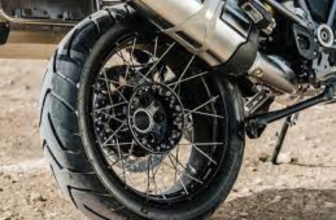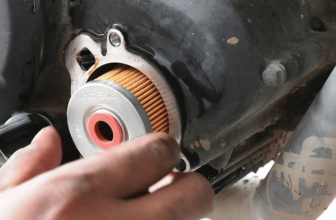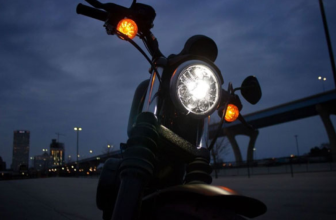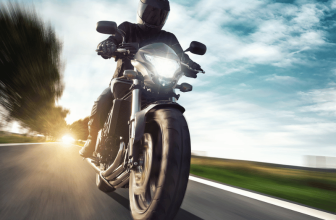Weather Impacts on Motorcycle Fuel Economy
Motorcycle fuel economy is a significant concern for both manufacturers and users, as it directly influences purchasing decisions. Manufacturers are keenly focused on addressing fuel economy issues. Given that motorcycles typically use internal combustion engines, fuel efficiency figures can vary based on different weather conditions. Therefore, our focus today is on exploring the impact of weather conditions on motorcycle fuel economy.
Motorcycle manufacturers place a significant emphasis on addressing the impact of weather conditions on fuel economy. They engineer their engines to adapt to various weather scenarios and deliver optimal fuel efficiency. Achieving such precision is a challenging and costly endeavor, typically found in technically advanced engines.
In contrast, entry-level commuter motorcycles often lack this level of precision in their engines. High-tech engines, on the other hand, intelligently handle weather-related challenges through sophisticated electronic enhancements. Given that a considerable number of motorcycles are commuter-oriented and widely used, it becomes crucial to delve into the specifics of how weather affects motorcycle fuel economy. Let’s explore this in more detail.
Normal Sunny Weather Condition Ensures Optimum Fuel Economy
Under standard weather conditions, motorcycle engines can achieve optimum fuel economy. In sunny weather, the engine effortlessly reaches its standard operating temperature, promoting smooth combustion. The air-fuel mixture is executed flawlessly, igniting with maximum efficiency. Additionally, in such conditions, humidity is neutralized, allowing the engine to deliver maximum power and ensure fuel efficiency.
Rainy Day or High Humidity Weather Condition
On rainy days, the air tends to be more humid compared to summer or sunny days, resulting in increased moisture content. This elevated humidity makes the air thicker, which is less than ideal for efficient combustion. Consequently, the air-fuel mixture ratio experiences fluctuations, preventing the motorcycle engine from burning fuel precisely.
This inconsistency in combustion leads to increased fuel consumption relative to power delivery. Additionally, in some cases, a portion of the fuel mixture remains unburnt, contributing to wastage. Consequently, on rainy days, motorcycle engines are unable to deliver power as efficiently, and fuel consumption tends to rise.
Winter, Cold, or Foggy Weather Conditions
In winter or cold weather conditions, motorcycle engines require a prolonged period to reach their standard operating temperature. Initially, the ignition is affected, taking additional time to attain the equivalent operating temperature. Consequently, the engine burns more fuel than under standard temperature conditions. This leads to increased fuel consumption every time the user stops and restarts the motorcycle.
Furthermore, in winter, the cold air poses challenges to the combustion process compared to standard weather conditions. The frigid air hampers combustion consistently. Additionally, the foggy air carries a higher concentration of water molecules, further impeding the combustion process. As a result, the efficiency of power delivery is reduced, and fuel consumption is elevated in winter conditions.
High Altitude, Low Air Pressure Condition
High altitude poses a significant concern that directly affects motorcycle fuel economy. In elevated areas such as hills or mountains, the air becomes thin and cold, disrupting the formation of an ideal air-fuel mixture. Additionally, the low oxygen levels impede ignition. In this scenario, the engine contends with a shortage of air, causing both oxygen and fuel to remain unburnt. Consequently, the standard power delivery is hindered, directly impacting fuel economy.
Impacts on Motorcycle Fuel Economy in Early Morning or Night Time
While it may seem counterintuitive, it holds true that motorcycle fuel economy diminishes in the early morning and nighttime. During these periods, the production of power by the motorcycle engine is also comparatively reduced. This phenomenon is attributed to the cold weather and the air’s moisture content. Consequently, when starting the motorcycle in the early morning or at night after an extended idle period, the ignition process takes longer for the initial start. Subsequently, it also requires a significant amount of time to reach the optimal performance level.
Dear readers, these are the prevalent weather situations that influence motorcycle fuel economy. In modern motorcycles, sophisticated technologies like the Engine Control Unit (ECU), Electronic Fuel Injection (EFI) System, and Oxygen Sensor (O2) play a crucial role in intelligently addressing and minimizing these issues. However, it’s important to note that these challenges cannot be entirely disregarded.
In conclusion, regardless of the weather conditions, as a motorcycle covers several kilometers, the engine eventually reaches its standard operating temperature. During this time, the engine consumes the least amount of fuel. Initially, at startup, fuel consumption is at its maximum and gradually decreases as the engine reaches standard operating temperatures. It’s worth mentioning that high-altitude situations pose a unique concern that consistently impacts fuel economy and engine operation. That concludes our discussion.







